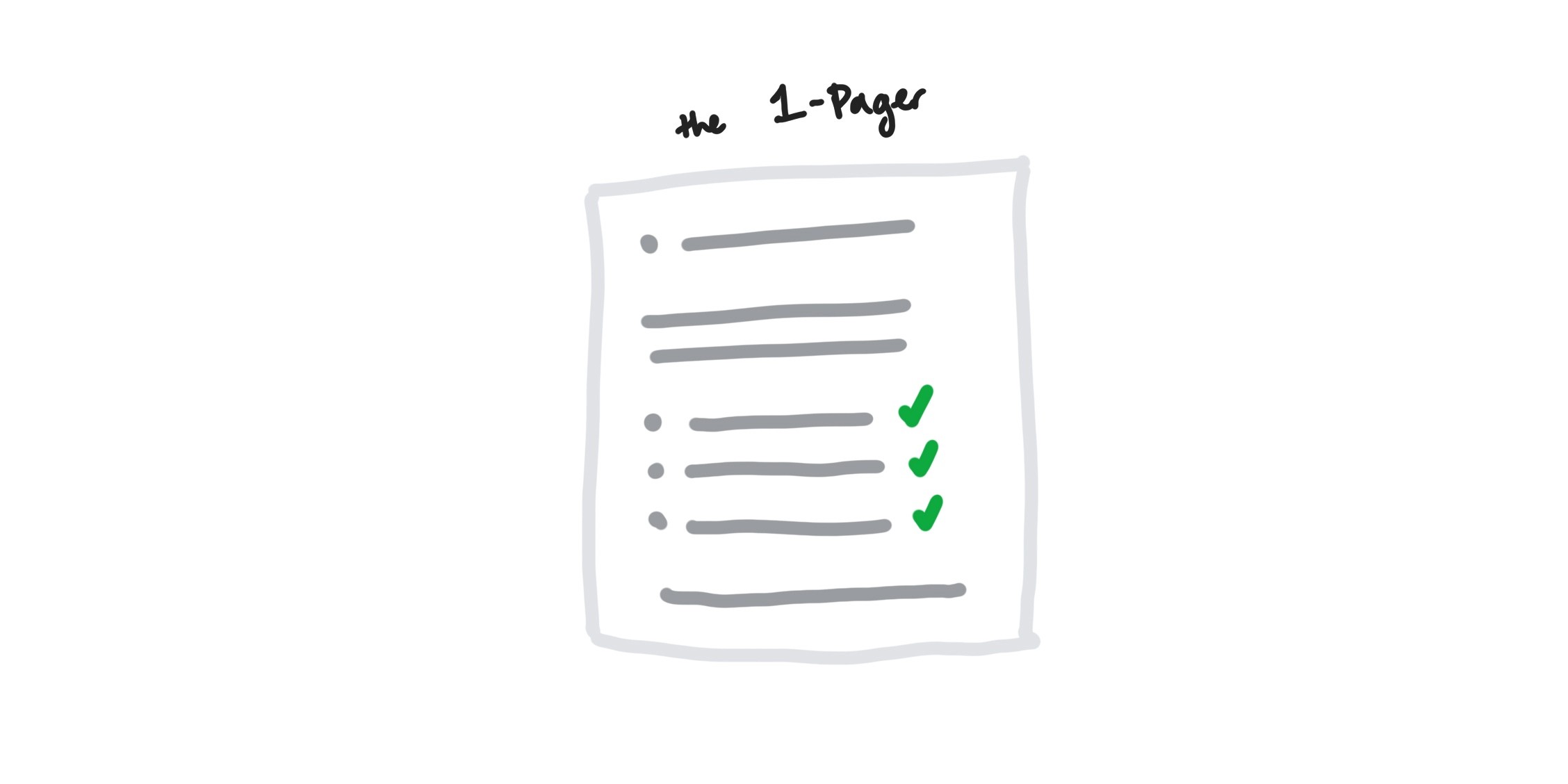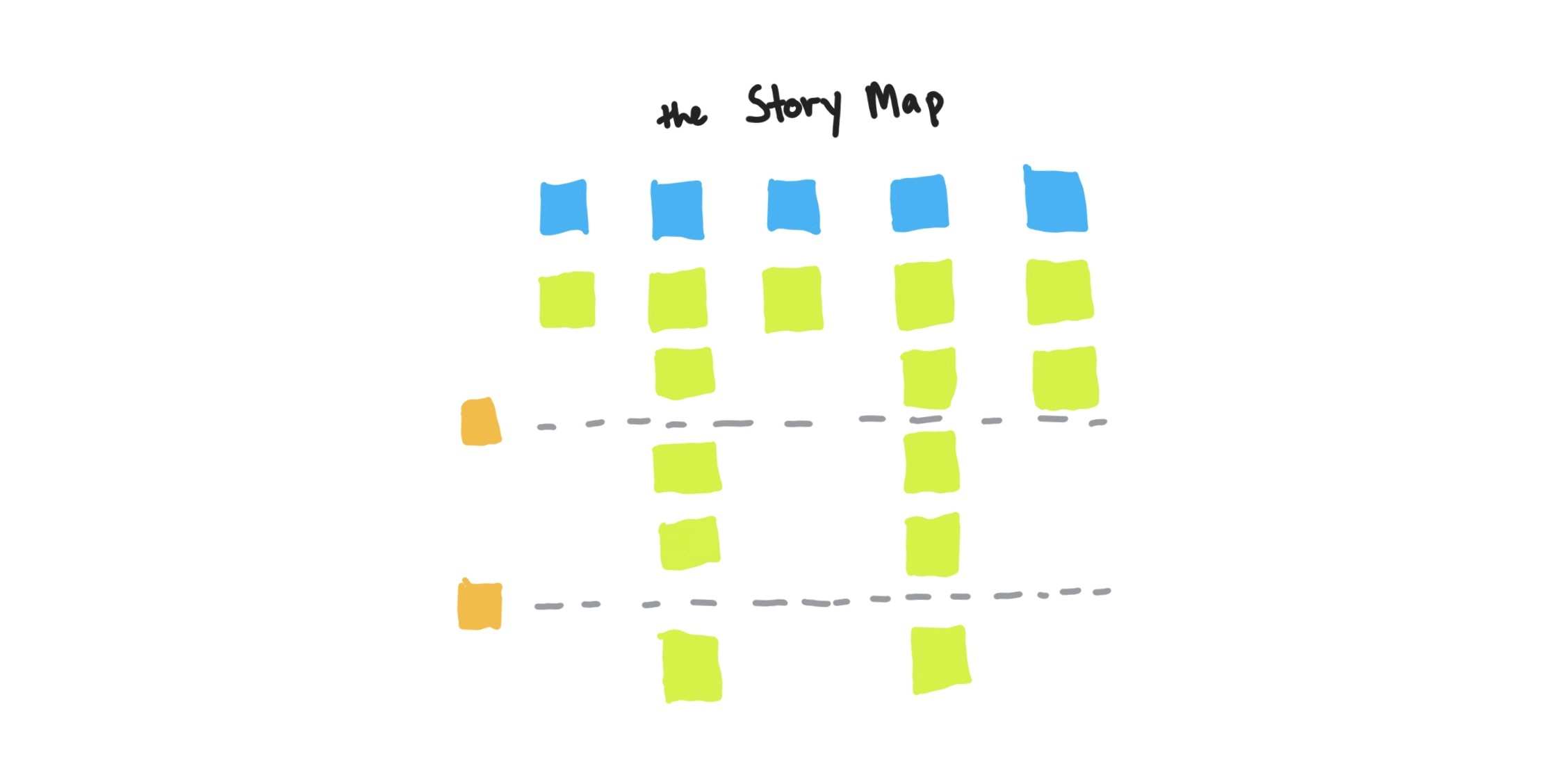The 1-Pager
January 31, 2024
What is a 1-Pager?
Part executive summary, part planning tool, the 1-Pager is a vital communication link between the Product Manager, UX Designer and the development team.
The 1-Pager relays distilled strategic thinking in a short amount of time. When an idea is just getting off the ground, you should do your best to capture it in a 1-Pager.
When should I create a 1-Pager?
If something is on a roadmap, it should have a 1-Pager.
If you don't have 1-Pagers for everything on your roadmap (at least the work items that are going to be started soon), usually that means you haven't done enough to articulate exactly what problems you're solving, the outcomes you're looking for, and how you'll know if you're successful.
The 1-Pager provides a format for thinking through these questions as early as possible. These can be challenging questions to answer, but when you have answers for them, you're on a solid path towards success.
The 7 questions a 1-Pager (1P) should answer:
1. What is the core objective?
Can you summarize the goal of the feature/enhancement in a few sentences?
2. Who are we building for?
How many customers benefit from this work, and from what cohort? Will this feature/enhancement impact new users or existing users?
3. What is the true value of what we are building?
What kind of value does this feature/enhancement add?
4. How will our users interact with it?
What will it look like and how will it function at a high level?
5. How much will sales increase?
What is the potential revenue of this feature or enhancement?
6. What is the cost to deliver this feature?
How many hours will it take to implement, and how much do those hours cost?
7. How will we ensure success upon launch?
What success metrics need to be tracked? How must they change to indicate this work is successful?
Bingo! All done.
That’s it. If you’ve answered those questions, your 1-Pager is doing its job. Then if you want to go further, consider how the ideas in the next section could help add color to any part of the 1-Pager that needs more clarity.
❌ What a 1-Pager is not
A 1-Pager should not be an exhaustive release plan checklist, but can include a breakdown of the effort required to release, if noteworthy.
A 1-Pager should not be a detailed marketing plan, but can include a link to a “future press release” to help communicate the vision.
A 1-Pager should not be a Product Requirement Doc, but may help summarize the minute details that live in a PRD.
A 1-Pager should not be a single user story or epic, but should summarize a “themed” body of work containing multiple stories or epics designed to achieve a focused outcome.
1-Pagers vs. Product Requirement Docs (PRD)
A PRD is an optional tool to help centralize details and minutiae related to a project, and is mostly an internal doc to be consumed by the development team instead of outside stakeholders.
A PRD should not be a crutch for poor team communication, but can help align teams by defining goals, estimates, decisions, and assumptions in one place.
If by using a PRD you find yourself valuing:
Processes and tools over individuals and interactions
Following a plan over responding to change
Comprehensive documentation over working software
Then it may be time to re-assess the purpose of the document and why you’re using it. Hint: those bullet points are all backwards if we want to stay agile 😉
Other ways to organize your thinking and prioritization
These frameworks provide guardrails for decision-making. Your team still needs to make thoughtful choices about what to prioritize next. If not a 1-Pager, sometimes one of these other frameworks should be applied to help plan and scope our work.
Using a scorecard
Using this scorecard (brazenly stolen from Aha!), we can assign a score to each enhancement, feature, or epic we choose to pursue, helping us determine impact over multiple categories.
Population (1-7): How many people does it affect? This could be tallied from related customer support tickets or how many ideas have been submitted.
Need (1-7): How important is it for those who require it? How big of a challenge is the problem? There is value in solving extremely thorny problems. But there is also value in solving something minor but meaningful to everyday use of your product.
Strategy (1-7): Does it support overall company strategy? What about product goals and other KPIs? Evaluate how aligned you think it is with business needs.
Effort (1-7): What resources are needed? There are real costs to whatever you pursue. Think about this one holistically — there is more to launching a feature than engineering. Consider design and UX, marketing, and other groups that may need to weigh in, such as legal.
Confidence (0-100%): What is the level of confidence in each score above? Give your best assessment, knowing it may change over time as you learn new information.
Example scorecard



